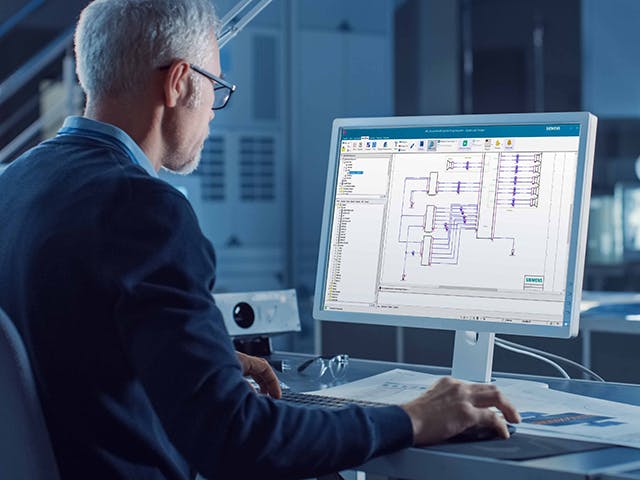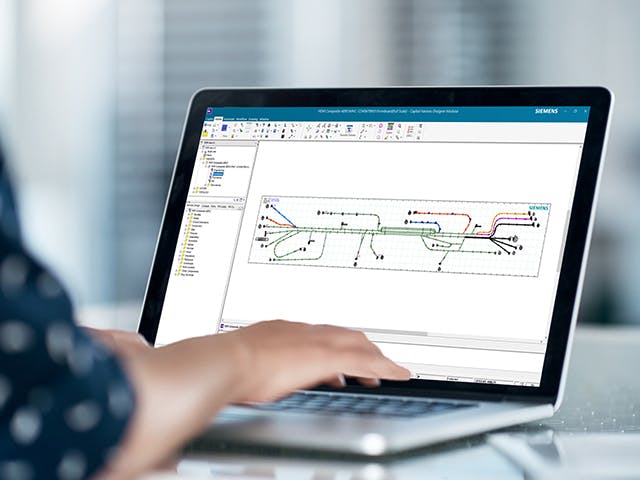Der Zweck eines Kabelbaums besteht darin, einzelne Drähte in einer einzigen Einheit zu organisieren, um elektrische Leistung und Signale effizient zu übertragen. Ein Kabelbaum reduziert die Arbeitszeit und das Potenzial für menschliche Fehler und ermöglicht es Technikern, komplexe Kabelbaugruppen in kleinen oder schwer zugänglichen Räumen unterzubringen.
Zum Beispiel gibt es in einigen modernen Fahrzeugen etwa 40 verschiedene Kabelbäume, die aus etwa 700 Steckern und mehr als 3000 Drähten bestehen. Die Bündelung von Drähten und Kabeln zu einem Kabelbaum vereinfacht den Anschluss an größere Komponenten als eine Einheit für die Drop-in-Installation, anstatt jede einzelne Litze zu verbinden.
Was ist Kabelbaumdesign?
Die Konstruktion von Kabelbäumen ist der Prozess, bei dem ein Ingenieur die Anforderungen eines elektrischen Teils des Systems unter Berücksichtigung des verfügbaren physischen Platzes bewertet, um eine Baugruppe von Drähten zu erstellen, die bei Bedarf Strom und Informationen liefert. Das Design muss alle notwendigen Komponenten miteinander verbinden und darf andere Systeme, die für den Betrieb und den Zweck des Produkts entscheidend sind, nicht beeinträchtigen.
Zum Beispiel muss ein Kabelbaum in einem Flugzeug alles von der Flugsteuerung über den Passagierkomfort bis hin zum Fahrwerk mit Strom versorgen. Die Konstruktion des Kabelbaums muss mechanische Systeme, den Komfort von Passagieren und Besatzung, die Gewichtsverteilung, die Rohrleitungen und vieles mehr berücksichtigen und berücksichtigen, um einen sicheren und effizienten Transport zu gewährleisten.
Herausforderungen im Kabelbaum-Engineering
Obwohl es die Herstellung von Kabelbäumen schon seit mehr als einem Jahrhundert gibt, stehen die Hersteller von heute vor unzähligen Herausforderungen wie niedrigen Margen, dem Verlust von Stammeswissen, komplexen Prozessen, kontinuierlichen Veränderungen und strengen Anforderungen an Qualität und Lieferung. Durch die Implementierung modellbasierter Workflows können Hersteller zuvor fragmentierte Konstruktions- und Fertigungsdomänen vereinheitlichen, indem sie den Datenaustausch automatisieren und domänenübergreifende Entscheidungen erleichtern. Durch die Integration von Designregeln, die die Automatisierung und Konsistenz im gesamten Engineering-Prozess unterstützen, kann Stammeswissen erfasst werden, anstatt verloren zu gehen.
Nutzen Sie einen umfassenden digitalen Zwilling im Kabelbaum-Designprozess
Mit der Technologie des digitalen Zwillings ist es möglich, veraltete Werkzeuge und Methoden der Fertigungstechnik zu ersetzen und gleichzeitig den Fluss der Konstruktionsdaten aufrechtzuerhalten. Dies ist entscheidend für Effizienz und kostengünstige Fertigung. Das hat zur Folge, dass immer mehr Unternehmen auf einen umfassenden digitalen Zwilling in der Kabelbaumkonstruktion setzen.
Die meisten Fahrzeughersteller haben beispielsweise einen digitalen Zwilling für den gesamten Lebenszyklus implementiert, um die Rückverfolgbarkeit der Design-, Herstellungs- und Nutzungsprozesse eines Fahrzeugs zu gewährleisten. Mit einem umfassenden digitalen Zwilling, der aus einem validierten Kabelbaummodell und einem digitalisierten Fertigungsprozessmodell besteht, können Unternehmen die Engineering-, Kalkulations- und Fertigungsleistung transformieren – und letztendlich den Gewinn steigern.



